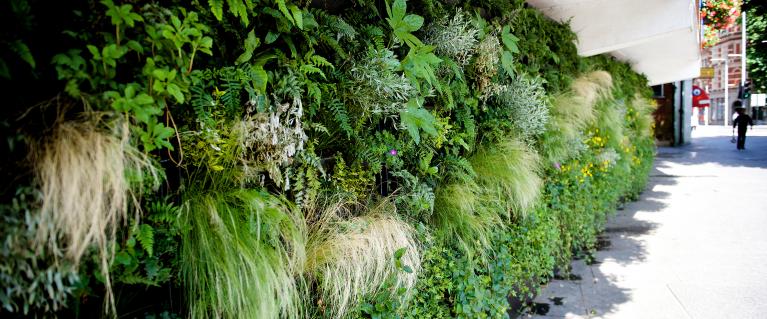
Green Infrastructure
London is a very green city. Its parks, gardens and canopy of trees make it an attractive place to live, work and invest. They also form part of the history and character of the city. These green places and features already provide us with space to relax, help to clean our air and are habitats for wildlife. However, planning and managing them as an integrated network of green infrastructure will provide more benefits to Londoners as the city grows, its climate changes and we tackle the city’s poor air quality.
What is Green Infrastructure?
Green infrastructure is just as important to the city as its grey infrastructure of rail, roads, pipes and cables. It is a network of parks, green spaces, gardens, woodlands, rivers and wetlands, as well as urban greening features such as street trees and green roofs. Together, this rich variety of greenery and the underlying geology and ecology of London’s Natural Signatures, contributes to creating a sense of local identity and distinctiveness, and can:
- promote healthier living, providing spaces for physical activity and relaxation
- cool the city and absorb stormwater to lessen the impacts of climate change
- filter pollutants to improve air and water quality
- make streets clean, comfortable and more attractive to encourage walking and cycling
- store carbon in soils and woodlands
- create better quality and better-connected habitats to improve biodiversity and ecological resilience
What we're doing
Not all Londoners have access to good parks or live in green neighbourhoods. The Mayor wants more than half of London to be green by 2050 so that everyone can experience, enjoy and benefit from the natural environment of the city. The Mayor also wants the full economic and social value of green infrastructure to be part of future decision making about the city.
The London Environment Strategy sets out actions the Mayor is taking to protect, increase and improve green infrastructure, including:
- making it the first National Park City
- working with others to expand and improve London's urban forest
- highlighting the economic value of London’s natural capital, and finding new ways to fund London’s green infrastructure that recognise this value
- providing guidance and support to help people manage and create habitats for wildlife and enhance London’s biodiversity
- making maps, data and research available to help others to make a case for and identify priorities for green infrastructure in their local area
- including policies in the new London Plan to protect the green belt and our best wildlife habitats, and to ensure that new developments include enough urban greening
- supporting communities and others to improve London’s greenspaces and opportunities to enjoy nature through our funding programmes.
Planning for green infrastructure
London Plan policies on green infrastructure and those relating to open spaces, biodiversity, trees and woodlands, and other natural habitats provide the strategic framework for decision making across London. The All London Green Grid (ALGG) Supplementary Planning Guidance provides spatial guidance together with a series of ALGG Area Frameworks that indicate local green infrastructure priorities and opportunities. A new London Green Infrastructure Framework is currently being developed to replace the ALGG.
London Green Infrastructure Framework
This will provide a vision and new spatial framework to target and prioritise green and blue infrastructure across London so that nature and green space can flourish and is accessible to all Londoners.
The London Green Infrastructure Framework (LGIF) is a recommendation in the London Climate Resilience Review and will replace the All London Green Grid and the Green Infrastructure Focus Map. It will be developed alongside the London Local Nature Recovery Strategy (LNRS), which will become the LGIF biodiversity/nature layer. It will inform any updates to the London Plan and will be completed by Summer 2025.
The LGIF will consist of interactive, digital mapping based on the best available data on environmental, social and economic factors, and a supporting framework document outlining strategic priorities for London’s green infrastructure. It will be developed in consultation with a wide range of stakeholders including local authorities, landowners, land managers, environmental organisations and community representative organisations.
What you can do to help
Everyone can help make London greener and support nature recovery. You could:
- Support the programme and activities of London National Park City and the wider London National Park City partnership
- Plant trees or improve your garden for wildlife
- Find out about volunteering opportunities through Team London
Need a document on this page in an accessible format?
If you use assistive technology (such as a screen reader) and need a version of a PDF or other document on this page in a more accessible format, please get in touch via our online form and tell us which format you need.
It will also help us if you tell us which assistive technology you use. We’ll consider your request and get back to you in 5 working days.